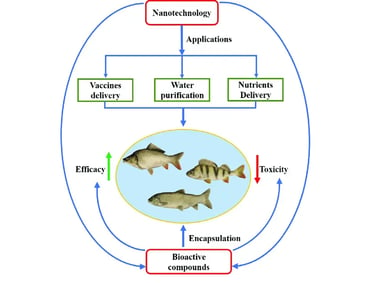Waterborne Parasites Detection and Prevention in Fish Farming
Waterborne parasites are a major problem in fish farming, causing fish loss and economic damage. Fish Vigyan helps farmers detect and prevent these parasites through training, equipment, and expert support.
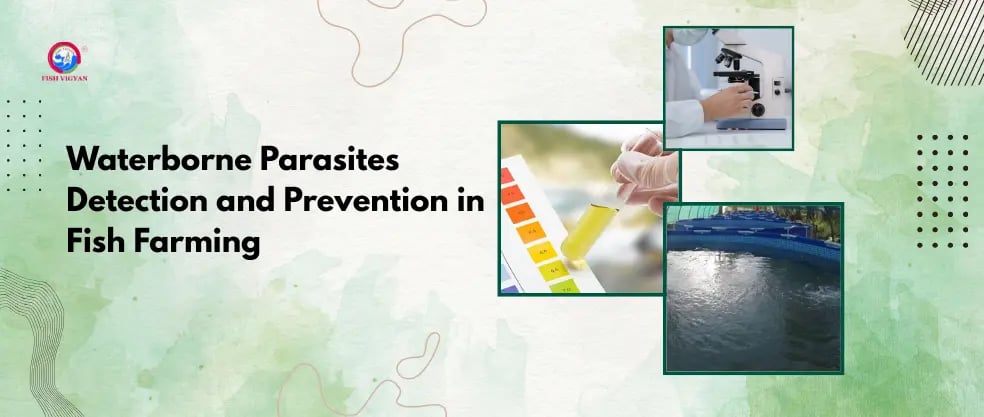

Waterborne Parasites Detection and Prevention in Fish Farming
Fish farming, also known as aquaculture, is a vital industry that provides a significant portion of the world’s seafood, contributing to food security and economic growth. According to the Food and Agriculture Organization (FAO), aquaculture accounted for 56.2% of global fish production in 2020, producing 122.58 million tonnes valued at USD 281.5 billion. However, one of the biggest challenges in fish farming is managing waterborne parasites, which can cause significant economic losses and threaten the sustainability of operations. At Fish Vigyan, we specialize in providing training, equipment, and consultancy to help fish farmers detect and prevent these parasites effectively. This article explores the detection and prevention of waterborne parasites in aquaculture, offering practical solutions for farmers to maintain healthy fish stocks and thriving businesses.
Understanding Waterborne Parasites in Aquaculture
Waterborne parasites are microorganisms or larger organisms, such as protozoans, worms, and crustaceans, that live in water and infect fish, causing diseases that affect growth, reproduction, and survival. These parasites thrive in aquatic environments, particularly in high-density fish farming systems like ponds, cages, or tanks, where they can spread rapidly. The FAO highlights that parasites are a major constraint in aquaculture, with global losses estimated between USD 1.05 billion and USD 9.58 billion annually due to reduced fish production and treatment costs.
Common waterborne parasites include:
Protozoans: Single-celled organisms like Ichthyophthirius multifiliis (causing white spot disease) and Saprolegnia parasitica (causing saprolegniasis).
Monogeneans: Flatworms like Gyrodactylus and Dactylogyrus, which attach to fish gills and skin.
Crustaceans: Parasitic copepods like Lepeophtheirus salmonis (sea lice) and Argulus (fish lice).
Nematodes and Trematodes: Roundworms and flukes that infect fish organs, such as Anisakis or Myxosporidia.
These parasites can lead to symptoms like abnormal swimming, skin lesions, reduced appetite, and high mortality rates, impacting both farm productivity and fish quality for consumers.
Why Parasite Detection and Prevention Matter
Parasites in fish farming not only cause direct losses through fish mortality and reduced growth but also pose risks to wild fish populations and human health. For instance, zoonotic parasites like Anisakis can infect humans if improperly handled fish are consumed. Additionally, parasites can spread from farmed to wild fish through water exchange in open systems like sea cages, affecting aquatic ecosystems.
Effective detection and prevention are critical for:
Economic Sustainability: Reducing losses from disease outbreaks ensures profitability for fish farmers.
Fish Health and Welfare: Healthy fish grow faster and produce better-quality products.
Environmental Protection: Preventing parasite transmission to wild populations supports biodiversity.
Consumer Safety: Controlling zoonotic parasites ensures safe seafood for human consumption.
At Fish Vigyan, we empower farmers with the knowledge, tools, and strategies to tackle these challenges, ensuring sustainable and profitable aquaculture operations.
Detecting Waterborne Parasites
Early detection of parasites is essential to minimize their impact. Delayed detection can lead to rapid disease spread, especially in high-density systems where fish are in close contact. Here are key methods for detecting waterborne parasites, supported by reliable practices from sources like the FAO and ResearchGate.
1. Visual Observation
Visual inspection is often the first step in detecting parasites. Farmers should monitor fish for signs of distress, such as:
Scratching or rubbing against surfaces (indicative of skin parasites like Ichthyophthirius).
White patches or fluffy growths on skin or gills (suggesting Saprolegnia or monogeneans).
Abnormal swimming, lethargy, or reduced feeding.
For example, Saprolegnia parasitica appears as white, cotton-like patches on fish, visible even from the water’s surface. Regular observation by trained personnel is crucial, as early signs can be subtle and easily missed in turbid water.
2. Microscopic Examination
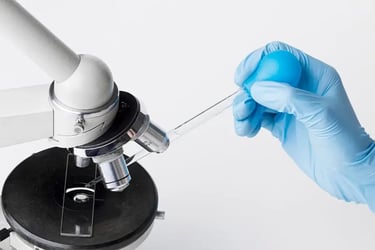

Microscopy is a reliable method for identifying parasites in tissue samples. Farmers can take skin scrapings, gill clippings, or mucus samples and examine them under a microscope. For instance:
Ichthyophthirius multifiliis appears as large, ciliated protozoans with a horseshoe-shaped nucleus.
Monogeneans like Gyrodactylus are identified by their hook-like structures on gills or skin.
Fish Vigyan provides training on microscopic techniques, teaching farmers how to collect and analyze samples accurately. This method is cost-effective and widely used in aquaculture diagnostics.
3. Molecular and Nanotechnological Methods
Recent advancements in diagnostics, as noted in studies from ResearchGate, have introduced molecular techniques like DNA barcoding and nanobiosensors for precise parasite identification. For example:
DNA Barcoding: This method uses genetic markers (e.g., 18S rDNA) to identify parasites like nematodes in fish from specific regions, ensuring accurate diagnosis.
Nanobiosensors: Gold nanoparticles and carbon nanotubes can detect low levels of parasites, viruses, or bacteria in water, enabling rapid response to outbreaks.
These technologies are particularly useful for detecting subclinical infections, where fish show no visible symptoms but carry parasites that can spread. Fish Vigyan offers consultancy on integrating these advanced tools into farm operations, tailored to budget and scale.
4. Serological Tests
Serological methods, such as enzyme-linked immunosorbent assay (ELISA), detect antigens or antibodies in fish sera to identify pathogens like Renibacterium salmoninarum or Trypanosoma carassii. These tests are rapid and provide visual results through color changes, making them practical for on-site use. However, they require specialized equipment and training, which Fish Vigyan provides through its workshops.
5. Water Quality Monitoring
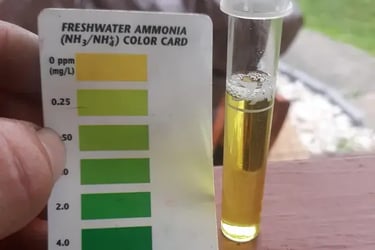

Poor water quality, such as high organic matter or low oxygen levels, can exacerbate parasite infections. Regular testing of parameters like pH, temperature, dissolved oxygen, and ammonia levels helps identify conditions that favor parasite growth. For instance, Saprolegnia thrives in water with high organic content. Fish Vigyan supplies water quality testing kits and training to ensure farmers can maintain optimal conditions.
Preventing Waterborne Parasites
Prevention is the cornerstone of parasite management in aquaculture. The FAO emphasizes a proactive approach, stating that “prevention is better than treatment.” Below are effective prevention strategies that Fish Vigyan promotes through its training and consultancy services.
1. Biosecurity Measures
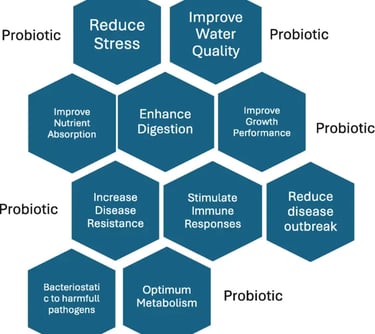

Biosecurity involves practices to prevent the introduction and spread of parasites. Key measures include:
Quarantine: New fish should be quarantined and tested for parasites before introduction to main systems.
Sanitation: Regular cleaning of tanks, nets, and equipment with disinfectants like hydrogen peroxide or chloramine-T, approved by the FDA, prevents parasite buildup.
Water Treatment: Filtering or treating intake water reduces the entry of parasite stages from external sources.
Fish Vigyan provides biosecurity training and equipment, such as UV sterilizers and filtration systems, to ensure pathogen-free environments.
2. Stocking Density Management
High stocking densities increases parasite transmission by facilitating close contact between fish. Reducing density and increasing water flow can flush out free-living parasite stages, like those of Ichthyophthirius multifiliis. Fish Vigyan consultants help farmers optimize stocking rates based on species and system type, balancing productivity and health.
3. Nutritional Support
Healthy fish are more resistant to parasites. High-quality diets with probiotics and immunostimulants enhance fish immunity. For example, the FAO notes that good nutrition reduces stress and improves resistance to diseases like saprolegniasis. Fish Vigyan offers guidance on formulating balanced feeds and sourcing safe ingredients to avoid disease transmission through feed.
4. Biological Control
Biological control uses natural predators to manage parasites. Cleaner wrasses, for instance, feed on sea lice in salmon farms, reducing the need for chemical treatments. Similarly, cohabitating species like leopard plecos can control Ichthyophthirius by grazing on parasite cysts. Fish Vigyan’s consultancy services include advice on integrating biological control into farming systems.
5. Chemical Treatments
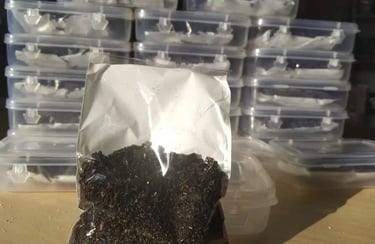

When outbreaks occur, chemical treatments can be effective but should be used judiciously to avoid environmental harm and antimicrobial resistance. Common treatments include:
Potassium Permanganate: Effective against protozoans and fungi, with a 7-day withdrawal period.
Diflubenzuron: Targets crustacean parasites like sea lice but requires careful handling due to its long half-life.
Formalin: Controls external parasites but must be used under veterinary supervision.
Fish Vigyan trains farmers on safe chemical use, ensuring compliance with regulations from organizations like the World Organisation for Animal Health (OIE).
6. Fallowing and Crop Rotation
Leaving ponds or cages fallow (empty) for a period disrupts parasite life cycles, as many parasites cannot survive without a host. For example, Ichthyophthirius cysts die without fish hosts within days or weeks, depending on water temperature. Fish Vigyan consultants design fallowing schedules to minimize reinfection risks.
7. Vaccination and Selective Breeding
Although only one commercial vaccine exists for fish parasites, research is ongoing to develop vaccines for viral and parasitic diseases. Selective breeding for parasite-resistant fish strains is also gaining traction. Fish Vigyan stays updated on these advancements, offering consultancy to adopt resistant strains and future-proof farms.
Fish Vigyan’s Role in Parasite Management
At Fish Vigyan, we understand that effective parasite management requires a combination of knowledge, tools, and tailored strategies. Our services are designed to empower fish farmers with practical, science-based solutions:
Training Programs: We offer hands-on workshops on parasite detection techniques, including microscopy, water quality testing, and biosecurity protocols. Our trainers use simple, translatable language to ensure accessibility for farmers worldwide.
Farming Equipment: We provide high-quality equipment, such as water quality testing kits, UV sterilizers, and filtration systems, to prevent and control parasite outbreaks.
Consultancy Services: Our experts work with farmers to develop customized biosecurity plans, optimize stocking densities, and integrate advanced diagnostics like nanobiosensors. We also guide farmers on regulatory compliance and sustainable practices.
By partnering with Fish Vigyan, farmers can reduce losses, improve fish health, and contribute to sustainable aquaculture.
Challenges and Future Directions
Despite advancements, challenges remain in parasite management. Climate change, for instance, alters water conditions, expanding the range of parasites like Saprolegnia. Additionally, the overuse of chemicals risks antimicrobial resistance, as noted in ResearchGate studies on gold nanoparticles. Future solutions include:
Developing more vaccines for parasitic diseases.
Expanding the use of nanobiosensors for real-time monitoring.
Promoting integrated aquaculture systems, like recirculation systems, to reduce parasite transmission.
Fish Vigyan is committed to staying at the forefront of these innovations, ensuring our clients benefit from the latest research and technologies.
Conclusion
Waterborne parasites pose a significant threat to fish farming, but with proactive detection and prevention strategies, farmers can minimize their impact. By combining visual observation, advanced diagnostics, biosecurity, and sustainable practices, Fish Vigyan helps farmers protect their stocks and livelihoods. Our training, equipment, and consultancy services are tailored to meet the needs of small- and large-scale farms, ensuring healthy fish, sustainable operations, and safe seafood for consumers. For more information on how Fish Vigyan can support your aquaculture business, visit our website or contact our team today.
Sources:
Food and Agriculture Organization (FAO). (2020). The State of World Fisheries and Aquaculture 2020.
Shinn, A.P., et al. (2015). Economic impacts of aquatic parasites on global finfish production. ResearchGate.
Buchmann, K. (2022). Control of parasitic diseases in aquaculture. Cambridge Core.
World Organisation for Animal Health (OIE). Manual of Diagnostic Tests for Aquatic Animals.
